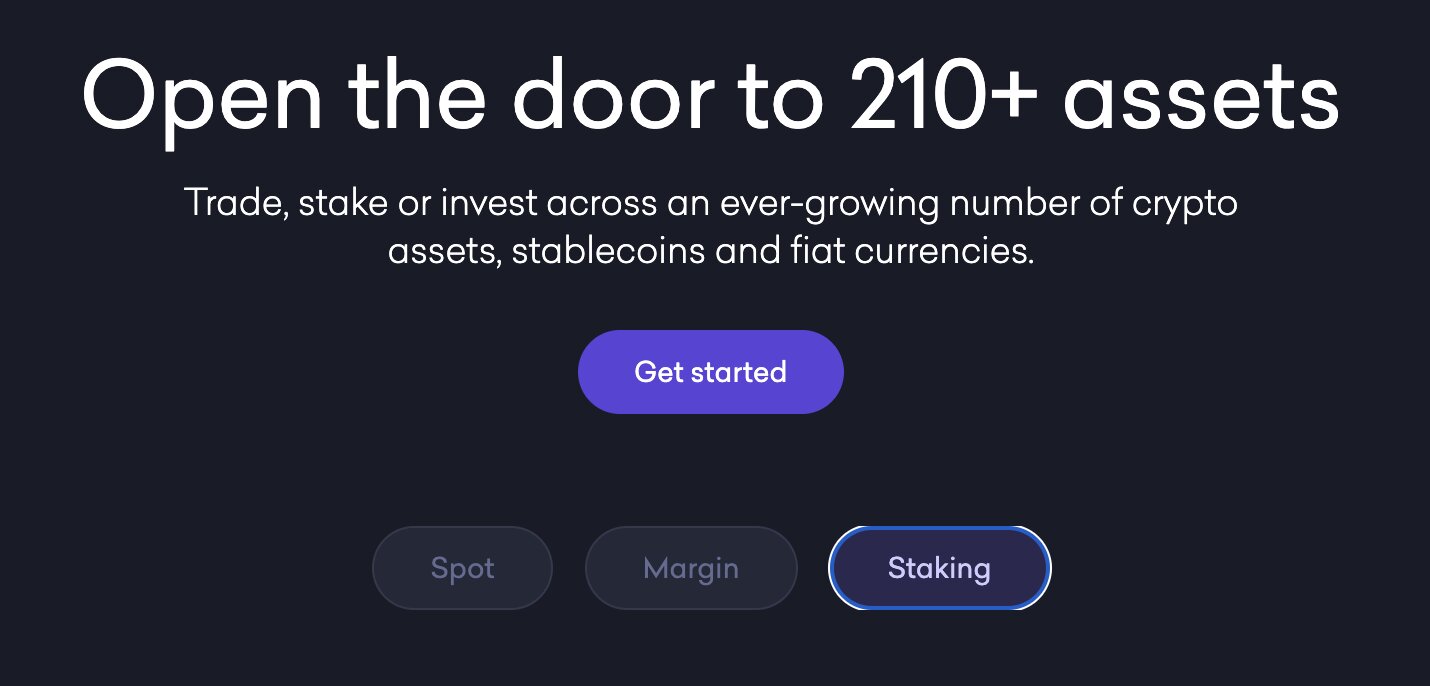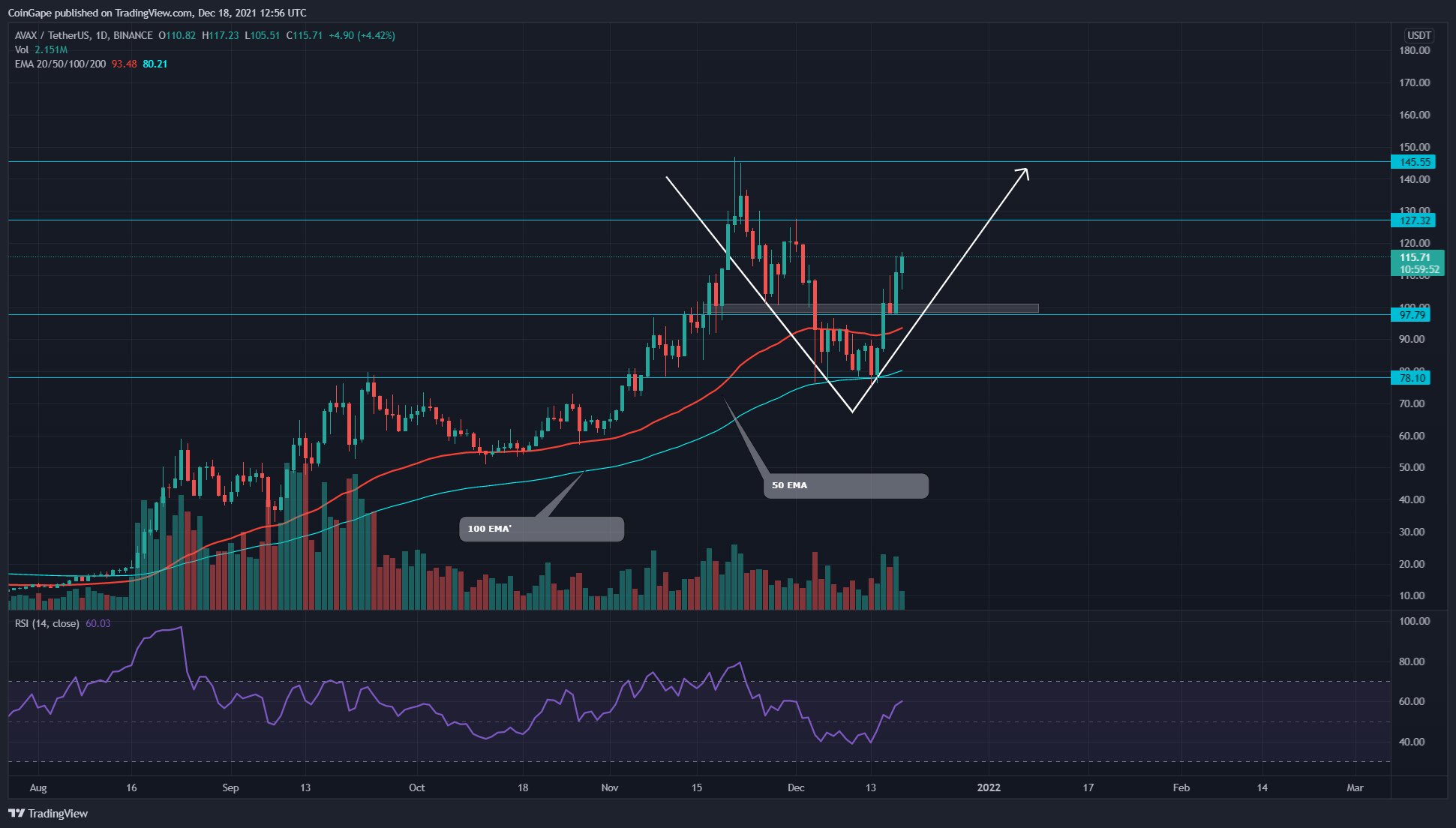Introduction
Welcome to the exciting world of cryptocurrencies! As digital currencies continue to revolutionize the financial landscape, new concepts and strategies emerge to maximize the potential of these assets. One such strategy is staking, a process that allows cryptocurrency investors to actively participate in network validation while earning rewards.
Staking, in simple terms, can be seen as a way to secure and validate transactions on a blockchain network. Unlike traditional proof-of-work (PoW) systems, where miners use computing power to solve complex mathematical problems, staking leverages the concept of proof-of-stake (PoS). PoS algorithms rely on validators holding a certain amount of cryptocurrency in a wallet, which is then “staked” or locked up as collateral. These validators are responsible for validating new transactions and maintaining the integrity of the blockchain.
Staking in the context of cryptocurrencies involves holders of a specific cryptocurrency, often referred to as a “staking coin,” actively participating in the network by staking their holdings. By doing so, they contribute to the security and stability of the blockchain network. In return for their participation, they earn rewards, usually in the form of additional cryptocurrency.
The concept of staking has gained popularity due to its potential to provide a passive income stream for cryptocurrency holders. By staking their coins, investors can earn additional tokens without the need for expensive mining equipment or extensive technical knowledge. Staking allows individuals to put their idle cryptocurrency holdings to work and potentially generate a steady return on investment.
While staking offers numerous benefits, it is essential to understand that it also comes with its own set of risks and considerations. As with any investment strategy, it is crucial to thoroughly research and evaluate the staking process and associated risks before committing funds.
In the following sections, we will dive deeper into how staking works, explore the pros and cons of staking in the crypto world, discuss popular staking cryptocurrencies, and highlight the risks and considerations involved in staking. By the end of this article, you will have a better understanding of how staking can potentially play a role in your cryptocurrency investment strategy.
What is Stake?
Before delving into the details of staking in the world of cryptocurrencies, let’s first understand the concept of stake itself. In a broader sense, the term “stake” refers to a person’s interest or involvement in a particular venture or activity.
In the context of cryptocurrencies, stake refers to the act of holding a certain amount of tokens or coins in a wallet with the purpose of validating transactions and participating in the network consensus mechanism. This process allows stakeholders to contribute to the security and governance of the blockchain network.
Stakeholders, also commonly known as validators, play an essential role in the proof-of-stake (PoS) consensus algorithm. While traditional proof-of-work (PoW) systems rely on miners using computational power to solve complex mathematical problems, PoS systems focus on the ownership or “stake” of a specific cryptocurrency.
Validators are selected based on the number of tokens they hold and are willing to lock up as collateral. By committing their stake as a form of collateral, validators have a financial incentive to act honestly and follow the consensus rules. This encourages validators to maintain a secure and stable network, as any fraudulent or malicious behavior could result in the loss of their staked funds.
The concept of staking provides a sustainable and energy-efficient alternative to the resource-intensive nature of mining in PoW systems. By eliminating the need for extensive computational power, staking reduces the environmental impact associated with cryptocurrency mining.
Staking is not limited to a specific type of cryptocurrency but rather depends on the consensus algorithm implemented by a particular blockchain network. Various cryptocurrencies, such as Cardano (ADA), Ethereum (ETH), and Tezos (XTZ), have adopted PoS or hybrid PoS algorithms, allowing their holders to actively participate in network consensus through staking.
By staking their tokens, validators contribute to the network’s overall security and decentralization. Their involvement in the consensus process helps validate transactions and maintain the integrity of the blockchain. In return for their participation, validators can earn rewards in the form of additional tokens, which often serve as an incentive to continue supporting the network.
Now that we have a clear understanding of what stake means in the context of cryptocurrencies, let’s explore the benefits and drawbacks of staking in the crypto world.
Stake in Crypto
Stake, in the realm of cryptocurrencies, plays a crucial role in building and maintaining the integrity of blockchain networks. It enables token holders to actively participate in network consensus and contributes to the security and decentralization of the system. Staking has become an attractive option for cryptocurrency investors, offering a way to earn passive income while supporting the growth and stability of their chosen blockchain projects.
Through staking, cryptocurrency holders can earn rewards for holding and staking their tokens. These rewards can vary depending on the specific blockchain network and its consensus algorithm. Typically, the more tokens staked, the higher the potential rewards. This incentivizes token holders to retain their holdings and actively participate in the staking process, rather than engaging in short-term trading.
One of the key advantages of staking in crypto is the potential for a consistent and predictable income stream. Unlike the volatility and uncertainty associated with traditional investment vehicles, staking rewards offer a more stable return on investment. Staking can be particularly attractive for long-term investors seeking to generate passive income from their cryptocurrency holdings.
Another benefit of stake in crypto is the ability to actively contribute to the security and decentralization of blockchain networks. By staking their tokens, investors help validate transactions and maintain the integrity of the network. This active participation strengthens the overall security of the blockchain and reduces the risk of malicious attacks.
Furthermore, staking offers a more environmentally friendly alternative to traditional mining methods. Unlike proof-of-work (PoW) systems that require significant computational power, staking is a more energy-efficient process that reduces the carbon footprint of cryptocurrency operations. This aligns with the growing global focus on sustainability and responsible use of resources.
However, it is important to note that stake in crypto also comes with its own set of risks and considerations. While staking can provide a reliable income stream, it is not entirely risk-free. The value of the staked tokens can fluctuate, impacting the potential rewards and overall value of the investment. Additionally, there is a risk of slashing or loss of staked tokens if a validator behaves maliciously or fails to follow the network consensus rules.
Despite these risks, staking has gained significant popularity within the crypto community. Many blockchain projects offer staking options, providing investors with an opportunity to actively participate in network consensus and potentially earn rewards. By holding and staking their tokens, individuals become an integral part of the crypto ecosystem and contribute to the growth and development of decentralized technologies.
In the next section, we will explore how staking works in greater detail, providing insights into the underlying mechanisms and processes.
Pros of Stake in Crypto
Staking in the world of cryptocurrencies offers several advantages that have contributed to its popularity among investors. Let’s explore some of the key benefits of staking in crypto:
1. Passive Income: One of the primary advantages of staking is the potential to earn a passive income. By staking their tokens, investors can earn additional cryptocurrencies as rewards. These rewards serve as a form of interest or dividend for holding and actively participating in the network consensus. Staking allows individuals to put their idle crypto assets to work and generate a steady stream of income.
2. Stability and Predictability: Unlike the volatility often associated with cryptocurrency trading, staking rewards offer a more stable and predictable income. The amount of rewards earned from staking is usually predetermined and based on the amount of tokens staked. This allows investors to have more certainty about their returns and plan their financials accordingly.
3. Decentralization and Network Security: Staking plays a vital role in promoting decentralization and enhancing the security of blockchain networks. By staking their tokens, investors actively participate in the network consensus, helping to validate transactions and maintain the integrity of the blockchain. This distributed approach reduces the risk of centralization and makes blockchain networks more secure against potential attacks.
4. Environmental Friendliness: Staking is often considered a more energy-efficient alternative to traditional mining methods. Unlike proof-of-work (PoW) systems that consume significant amounts of electricity, staking requires minimal computational power. This reduces the carbon footprint associated with cryptocurrency operations and aligns with the growing global focus on sustainability.
5. Alignment of Interests: Staking aligns the interests of token holders with the success and growth of the blockchain project. By staking their tokens, investors have a financial stake in the network’s success. This encourages long-term commitment and ensures that stakeholders actively contribute to the development of the project by supporting its stability and security.
6. Lower Barrier to Entry: Staking provides an opportunity for individuals to participate in the cryptocurrency ecosystem without the need for expensive mining equipment or technical expertise. It reduces the barrier to entry and allows a broader audience to engage with the world of cryptocurrencies. Anyone holding a certain amount of tokens can participate in staking and earn rewards, promoting inclusivity within the crypto community.
These are just a few of the key advantages of staking in crypto. By participating in the staking process, investors can earn passive income, contribute to network security, and align their interests with the success of the blockchain project. However, it is important to carefully assess the risks and considerations associated with staking before committing funds.
Next, we will discuss the potential downsides and considerations that come with staking in the crypto world.
Cons of Stake in Crypto
While staking in cryptocurrencies offers numerous benefits, it is essential to consider the potential downsides and risks before engaging in this investment strategy. Here are some of the cons of staking in crypto:
1. Risk of Price Volatility: One of the inherent risks of staking is the volatility of cryptocurrency prices. The value of the staked tokens can fluctuate significantly, which can impact the potential rewards earned from staking. Investors must be aware that they may experience losses if the value of the staked tokens declines, especially in a bear market.
2. Slashing Risk: Staking also comes with a risk known as “slashing.” Slashing occurs when a validator behaves maliciously or against the network consensus rules. In such cases, a portion of the staked tokens can be confiscated as a penalty. Validators must exercise caution and adhere to the guidelines provided by the blockchain network to avoid the risk of having their staked tokens slashed.
3. Limited Liquidity: When tokens are staked, they are typically locked up for a predetermined period. This lack of liquidity can be a drawback for investors who may require immediate access to their funds. It is important to consider the lock-up periods associated with staking and assess one’s liquidity needs before deciding to stake tokens.
4. Operational Risks: Staking often involves entrusting one’s tokens to validators or staking platforms. This introduces operational risks, such as platform hacks or vulnerabilities. Investors must conduct thorough research and due diligence before selecting a staking provider to mitigate these risks.
5. Regulatory Uncertainty: The regulatory landscape surrounding cryptocurrencies is continually evolving. There may be uncertainty and potential regulatory challenges associated with staking, especially in jurisdictions where cryptocurrency regulations are not well-defined. Investors should stay informed about the legal and regulatory environment concerning staking activities.
6. Network Consensus Risks: Staking requires trust in the underlying network consensus mechanism. If flaws or vulnerabilities are discovered in the consensus algorithm, it can impact the security and stability of the network. It is essential to stay updated on the latest developments and potential risks associated with the consensus mechanism of the chosen blockchain project.
While these cons highlight some of the risks and considerations of staking in crypto, it is important to note that the severity and likelihood of these risks can vary depending on the specific blockchain network and staking implementation. Conducting thorough research and only staking funds that one can afford to lock up are essential practices for managing these risks.
Now, let’s explore how staking works in greater detail, providing insights into the underlying mechanisms and processes.
How Does Staking Work?
Staking is a process that allows cryptocurrency holders to actively participate in network consensus and contribute to the security and integrity of a blockchain network. Let’s dive into how staking works:
1. Choosing a Staking Coin: The first step is to select a cryptocurrency that offers staking capabilities. Not all cryptocurrencies support staking, so it is important to choose one that aligns with your investment goals and preferences.
2. Setting up a Wallet: Once you have chosen a staking coin, you need to set up a wallet that supports staking. This wallet will be used to hold and stake your tokens. It is important to choose a reliable wallet that offers robust security measures to protect your funds.
3. Obtaining and Holding Tokens: To stake tokens, you need to acquire them through an exchange or another means of obtaining cryptocurrencies. Once you have the tokens, transfer them to your staking wallet and ensure they meet the minimum staking requirements set by the network.
4. Participating in Network Consensus: By staking your tokens, you become an active participant in the network consensus mechanism. The blockchain network selects validators based on their stake or the number of tokens they hold and are willing to lock up as collateral.
5. Validating Transactions: As a validator, your role is to validate transactions and add them to the blockchain. This involves confirming the accuracy and legitimacy of transactions and ensuring they comply with the network consensus rules.
6. Earning Staking Rewards: Validators are rewarded for their participation in the staking process. The specific criteria for earning rewards vary depending on the network, but generally, the more tokens staked, the higher the potential rewards. Rewards are typically distributed in the form of additional tokens, providing a financial incentive to continue staking and supporting the network.
7. Withdrawal and Unstaking: Depending on the network and staking platform, there may be a lock-up period during which the staked tokens cannot be accessed. After the lock-up period expires, or if the network allows for partial unstaking, you can choose to withdraw or unstake your tokens from the staking pool and regain control over them.
It is important to note that the exact process and technical requirements of staking can vary between different cryptocurrencies and blockchain networks. Some networks may have specific rules or criteria for becoming a validator, and the rewards and staking mechanisms may differ as well.
When considering staking, it is essential to thoroughly research and understand the staking process of the specific cryptocurrency you intend to stake. Familiarize yourself with the staking requirements, rewards structure, risks, and any associated fees before committing your funds.
In the next section, we will explore some of the popular staking cryptocurrencies and the rewards they offer for staking.
Popular Staking Cryptocurrencies
As staking gains traction in the cryptocurrency world, numerous blockchain projects have implemented staking mechanisms within their networks. Let’s take a look at some of the popular staking cryptocurrencies:
1. Ethereum (ETH): Ethereum, one of the most prominent blockchain platforms, has transitioned to a proof-of-stake (PoS) consensus mechanism with the implementation of Ethereum 2.0. Staking on the Ethereum network involves locking up a minimum of 32 ETH in a validator deposit contract. Validators are responsible for proposing and validating new blocks, and in return, they earn staking rewards.
2. Cardano (ADA): Cardano is a blockchain platform known for its rigorous scientific approach to development. It utilizes a consensus algorithm called Ouroboros, which is a proof-of-stake protocol. ADA holders can participate in staking by delegating their ADA to a stake pool or by running their own stake pool. Stakers receive rewards based on their stake and the performance of the network.
3. Polkadot (DOT): Polkadot is a multi-chain blockchain platform designed to enable interoperability between different blockchains. Its consensus mechanism, called Nominated Proof-of-Stake (NPoS), allows DOT holders to nominate validators and stake their tokens. Validators on Polkadot are responsible for maintaining network consensus and securing the blockchain. Stakers can earn rewards by staking DOT tokens and participating in governance activities.
4. Tezos (XTZ): Tezos is a blockchain platform that utilizes a liquid proof-of-stake (LPoS) consensus algorithm. Tezos holders can participate in staking by delegating their XTZ tokens to a baker or by becoming a self-baker. Bakers are responsible for creating new blocks and verifying transactions. In return for their services, bakers receive staking rewards, which they can share with their delegators.
5. Cosmos (ATOM): Cosmos is an interoperable blockchain ecosystem that enables the exchange of assets and data across different blockchains. The consensus mechanism used by Cosmos is called Tendermint BFT, which relies on a proof-of-stake system. ATOM holders can stake their tokens to become validators or delegate their ATOM to validators. Validators secure the network and earn staking rewards, while delegators receive a portion of the rewards based on their stake.
6. VeChain (VET): VeChain is a blockchain platform focused on supply chain management and enterprise adoption. It utilizes a proof-of-authority (PoA) consensus algorithm, where authority masternodes validate transactions. Holders of VET tokens can participate in staking by generating VTHO, the fuel for the network. Stakers are rewarded with VTHO based on the amount of VET they hold and stake.
These are just a few examples of the many cryptocurrencies that offer staking opportunities. Each project has its own staking requirements, rewards structure, and governance mechanisms. It is important to research and understand the specifics of each staking cryptocurrency before deciding to stake your tokens.
Now that we have explored popular staking cryptocurrencies, let’s move on to discussing the risks and considerations associated with staking.
Staking Risks and Considerations
While staking can offer enticing rewards and benefits, it is important to be aware of the risks and considerations involved. Let’s explore some of the key factors to consider when it comes to staking:
1. Price Volatility: Cryptocurrency markets are known for their inherent price volatility. The value of the tokens you are staking can fluctuate significantly, impacting the potential rewards earned. It’s crucial to assess your risk tolerance and evaluate the potential impact of price fluctuations on your staked assets.
2. Slashing and Penalties: Validators face the risk of having their staked tokens slashed as a penalty if they behave maliciously or go against the network consensus rules. This can result in a loss of funds. Validators must understand the rules and guidelines of the specific blockchain network and take precautions to ensure they comply with them.
3. Operational Risks: Staking often involves entrusting your tokens to validators or staking platforms. This introduces operational risks such as platform hacks, vulnerabilities, or technical failures. It is important to research and select reliable and reputable staking providers to mitigate these risks.
4. Lock-Up Periods: When staking tokens, there may be a lock-up period during which your tokens cannot be accessed or sold. This lack of liquidity can be a consideration if you require immediate access to funds. Assess your liquidity needs and the duration of the lock-up period before committing your tokens to staking.
5. Regulatory Uncertainty: The regulatory landscape surrounding cryptocurrencies and staking specifically is still developing. Regulations can vary by jurisdiction, and there may be uncertainties and potential risks associated with compliance. Stay informed about the legal and regulatory requirements of staking activities in your jurisdiction.
6. Network Consensus Risks: The security and stability of a blockchain network depend on the underlying consensus mechanism. It is important to understand the potential risks associated with the consensus algorithm used by the blockchain project you are staking with. Stay updated on any vulnerabilities or weaknesses that could jeopardize the integrity of the network.
7. Consideration of Rewards and Fees: Evaluate the rewards and fees associated with staking before committing your tokens. Some staking platforms may charge management or withdrawal fees, which can impact your overall returns. Compare the potential rewards with the associated costs to ensure it aligns with your investment goals.
These risks and considerations highlight the importance of conducting thorough research and due diligence before engaging in staking activities. Understanding the specific terms, requirements, and risks associated with staking in different blockchain networks is key to making informed investment decisions.
Now, let’s conclude our exploration of staking by summarizing the key insights we have discussed throughout this article.
Conclusion
Staking in the world of cryptocurrencies offers investors an opportunity to actively participate in network consensus and earn rewards for holding and staking their tokens. It enables individuals to contribute to the security, decentralization, and stability of blockchain networks while potentially generating a passive income stream. However, it is important to consider the risks and considerations associated with staking before committing funds.
We explored the concept of stake and how it relates to cryptocurrencies, with staking allowing investors to actively participate in network validation. We discussed the pros of staking, such as the potential for passive income, stability, and alignment of interests with the success of the project. Additionally, staking promotes decentralization, reduces the environmental impact, and lowers the barrier to entry for individuals interested in the world of cryptocurrencies.
However, it is essential to be aware of the potential cons of staking. Price volatility, slashing risks, limited liquidity, operational risks, regulatory uncertainty, and network consensus risks are some of the factors that investors need to consider and manage. Thorough research, risk assessment, and due diligence are vital for successful staking activities.
Popular staking cryptocurrencies, including Ethereum, Cardano, Polkadot, Tezos, Cosmos, and VeChain, provide opportunities for investors to participate in staking and potentially earn rewards. Each project has its own staking requirements, rewards structure, and governance mechanisms. Understanding the specifics of each staking cryptocurrency is crucial to making informed decisions.
In conclusion, staking offers a potentially lucrative and engaging way to earn passive income and actively contribute to the growth and security of blockchain networks. By understanding the benefits, risks, and considerations, investors can make informed decisions and incorporate staking into their cryptocurrency investment strategies.

























